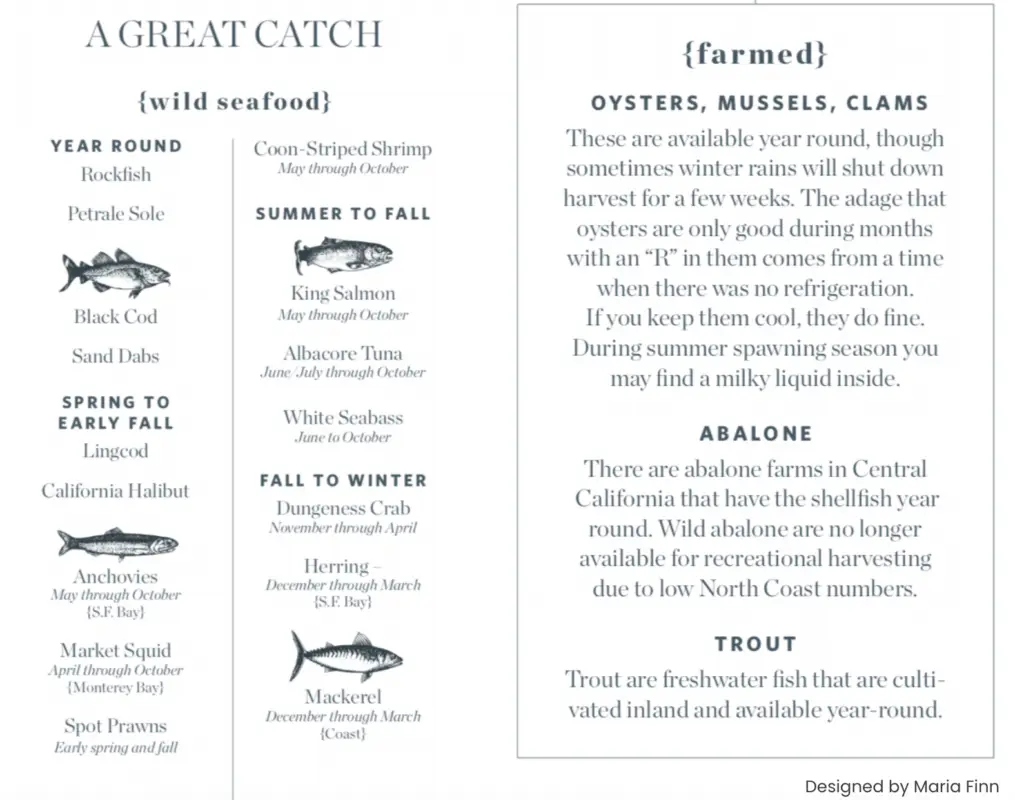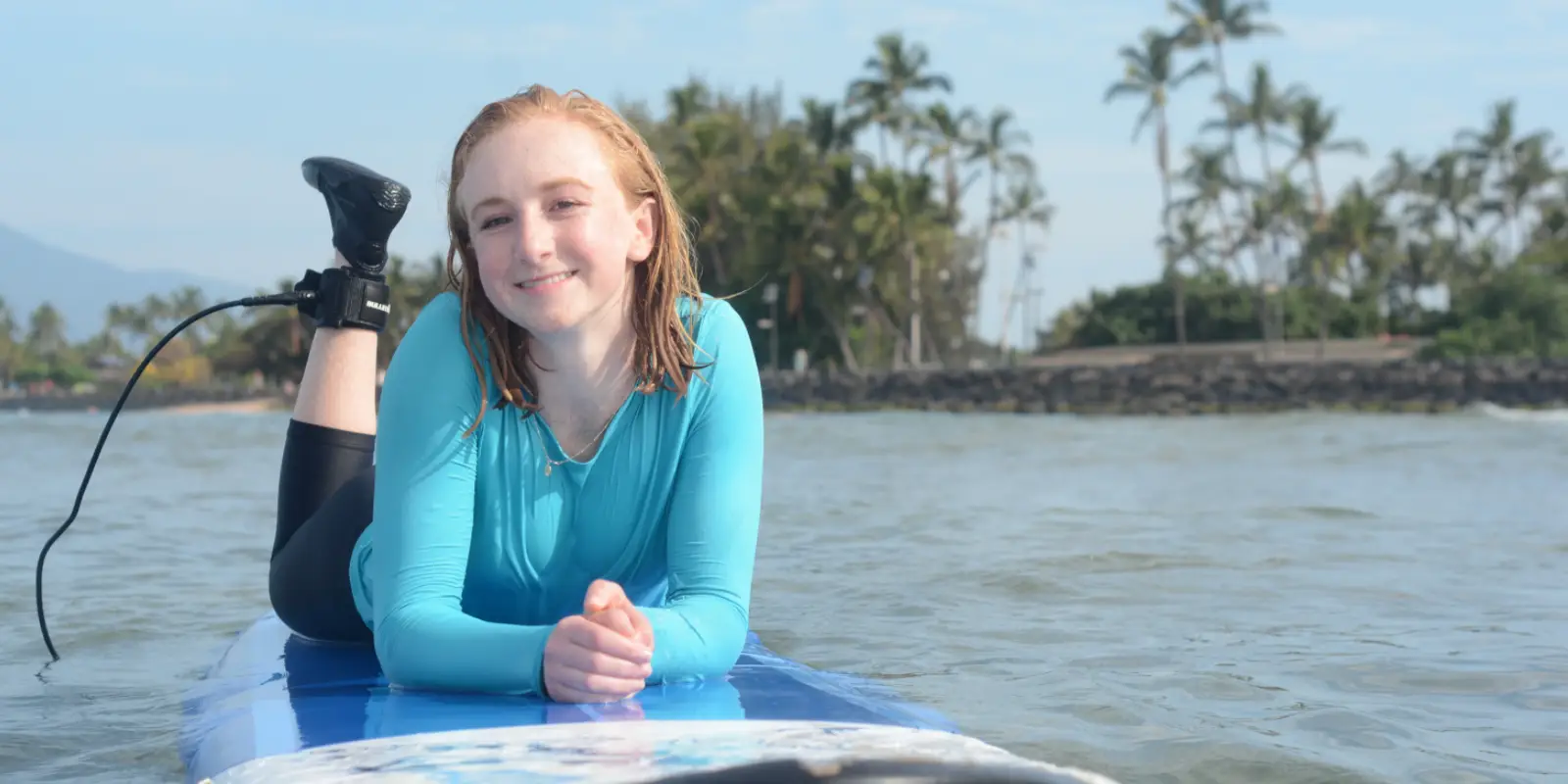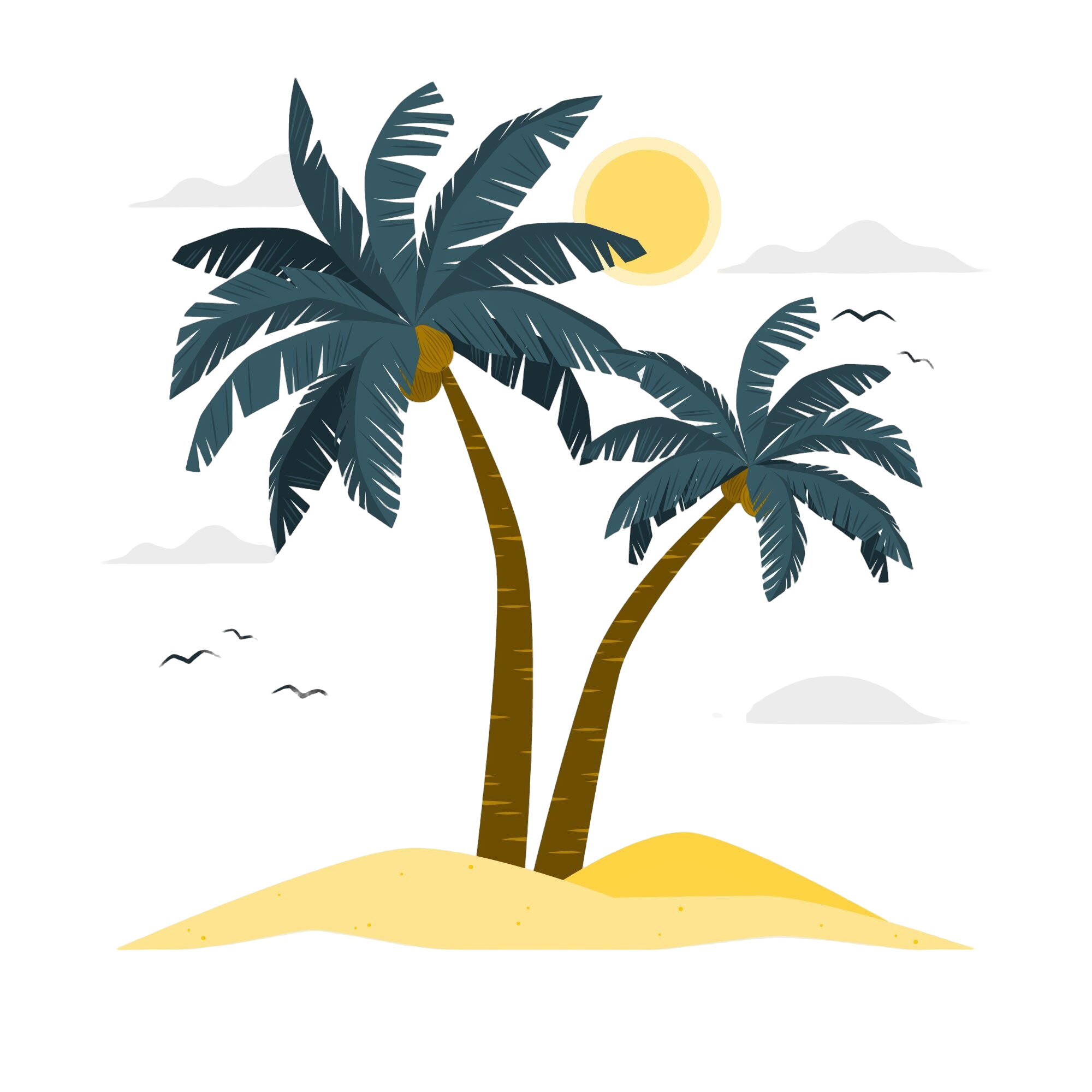Maria Finn, aka the Queen of Sustainable Seafood in the Bay area, is a Marin-based foodie, chef, speaker, and author. She has worked with the Ocean Conservancy, community supported fishery Real Good Fish, various fishery organizations and has spoken on her experiences at the SOCAP Conference, Chefs Collaborative, the California Academy of Sciences and many other places. Last year she wrote a four-part syndicated series from Hothouse with chapter titles: “Save the Sea. Eat an Oyster”, “Seawater is the New Soil”, “The Well-Traveled Squid”, “Eat Like an Animal”, and more. Her writing is featured in TED Books, Wine Spectator, Wall Street Journal, The New York Times, Sunset Magazine, and she has written for The Food & Environmental Reporting Network. Her cookbook, Forage. Gather. Feast is forthcoming on Sasquatch Books in April 2024 with recipes from the coast, forest and urban areas. We talked with Maria to get the scoop on how to find sustainable seafood in the Bay Area.
Feature image by Marla Aufman
What's your food background, and what inspired you to dive into sustainability in food?

What are the guilt free options to order while traveling if you want to get seafood?
Where do you come across "farmed salmon, shrimp, big tuna" the most?
Why is farmed salmon so bad?

Top tips for people looking to eat sustainable seafood in the Bay Area?
What's your latest adventure?
During COVID, I started my company, Flora and Fungi Adventures. It is an outdoor adventure experience where I teach people how to forage for porcini and chanterelles, cook on open fires, learn the benefits and basics of seaweed, and more. I’ve been expanding the adventures based on people’s interests. For example, someone asked where I get my anchovies, so I started a class where people meet me at the Fisherman’s Wharf and teach people how to buy right from the fisherman and filet there. I am planning a series of pop-up dinners as part of The Institute for Ecosystem-based Living that I’m launching in 2024, where I bring in a scientist and artist to talk on a theme, and I cook a meal that ties into it. Finally, my latest with Flora Jayne are truffle talks and tastings at wineries, businesses, and schools. Truffles sound bouje, but they are an incredible communicator and mover of energy in the forest, and I love to share them.



